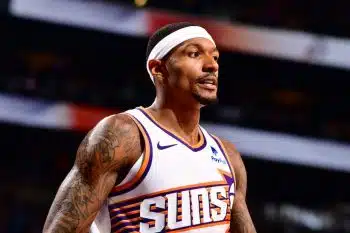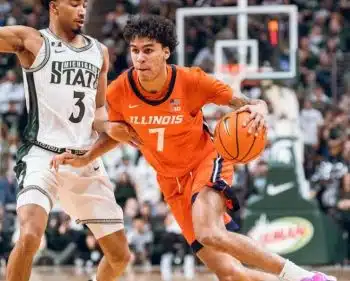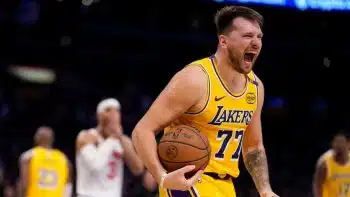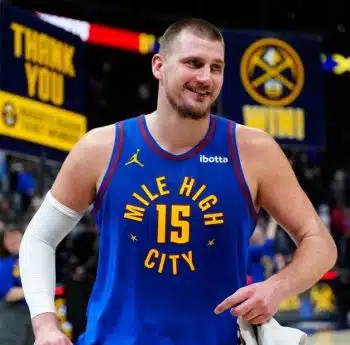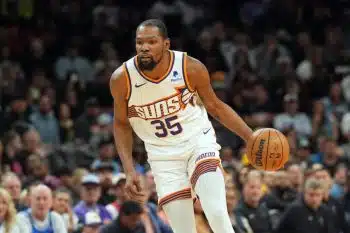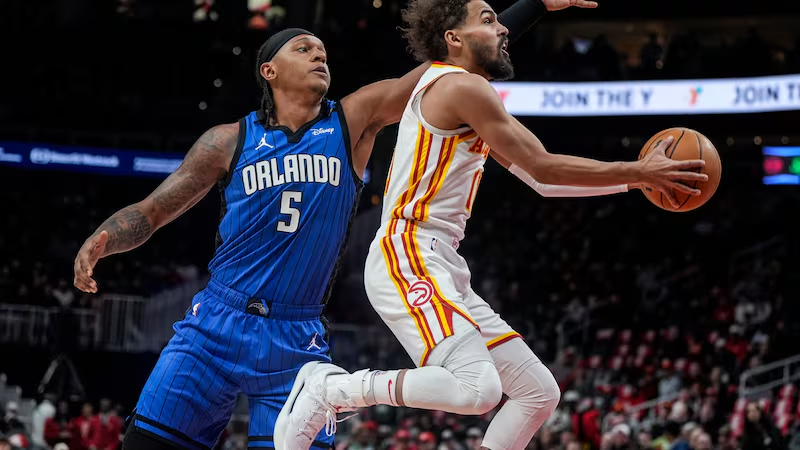NBA
Fixing the Memphis Grizzlies
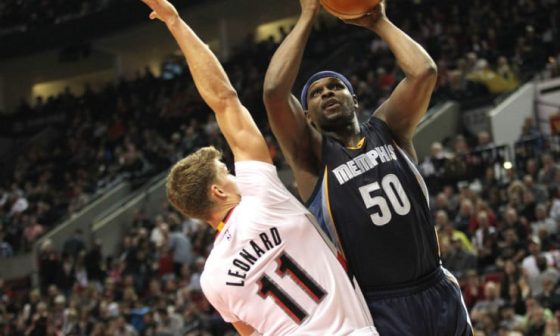
Whether they were true title contenders or not, what happened to the Memphis Grizzlies this year doesn’t seem fair. An unreal succession of injuries detonated what was already a strange season in progress, robbing us all of the yearly pleasure of watching Grit and Grind give some title contender headaches in the early rounds. Marc Gasol turned 31 a couple weeks before foot surgery suddenly gave a very imposing feel to the four expensive years left on his contract after this season. Every depressing element was set against a backdrop of Mike Conley’s impending unrestricted free agency, and thrown into sharper focus suddenly Saturday morning with news of Dave Joerger’s dismissal.
In all honesty, the injuries may have obscured the unfortunate truth that this team was playing with house money all year long. Even while healthy, with point differential indicators pegging them as a non-playoff team, the win-loss results they managed painted them as one of the statistically “luckiest” teams in league history, a theme that held through the full 82 games: The Grizzlies became just the third team since 1946 to post an SRS rating (point differential adjusted for strength of schedule) at or below negative-2.0 while still winning at least half of their games.
Memphis was just 16th in the league for defensive efficiency even before Gasol’s injury, a big departure from recent years and a worrying warning light with a similarly anemic offense still struggling to break league average. The Grizzlies were once again in the league’s bottom third for attempts and accuracy from beyond the arc, not a surprise given a total lack of marksmanship in the perimeter rotation outside of Conley and Matt Barnes. Stifling defense wasn’t propping up a more old-fashioned attack built on Gasol and Zach Randolph bullying teams from the elbows.
Entering a summer that is unpredictable enough on its own, the Grizzlies are at something of a crossroads after a strange end to the year and the Joerger bombshell. Let’s break down a few of the biggest themes vital to their future.
The Big Picture
Were it not for this franchise’s resiliency over the last half decade or more, the more prescient vultures among us might already be starting to circle above Memphis in anticipation.
Randolph turns 35 in July, and his value in the modern NBA is diminishing along with his body. Gasol was having his worst year in several before he went down, struggling to make his usual defensive impact. The Grizzlies relied heavily on guys like Barnes, Tony Allen, Mario Chalmers and Lance Stephenson at various points this year, and the fact that Barnes’ potential departure legitimately damages their wing rotation is very worrying.
Worse yet, the future doesn’t look too bright. GM Chris Wallace has exactly zero blue chip youngsters or recent draftees in house, with 2014 first-rounder Jordan Adams and his 263 NBA minutes (due in large part to injury this year, to be fair) over the course of two seasons serving as their recent draft headliner. Adams was infamously taken one pick ahead of burgeoning Jazz guard Rodney Hood, a move Joerger wasn’t shy about reminding folks he was against at the time, and 2015 selection Jarell Martin isn’t blowing anyone away.
There isn’t too much help on the way, either. Their 2016 playoff berth ensured Memphis will keep their pick this year rather than sending it to Denver, but Wallace could quickly be wishing they’d sacrificed four ugly losses to the Spurs and missed out on the postseason entirely. The pick is just 17th after a lost coin flip, and Memphis keeping it this year means it becomes just top-5 protected next year.
A healthy Gasol keeps this team too solid for a tank job anywhere near that disastrous, but likewise isn’t enough to carry a playoff team on his own. A worst-case scenario sees the Grizzlies send a Denver a pick in the six-to-10 range in a 2017 draft that many league insiders consider much stronger than the 2016 class. If they manage to keep things afloat and stay in the playoffs for the next couple years, they’ll lose their 2018 first round pick as well (to Boston, protected top-12).
Such a bare cupboard doesn’t make things any easier on Wallace, who is already facing an uphill climb to continue a run of six straight playoff appearances. A coup in summer free agency – never likely for even the biggest markets, nearly impossible in places like Memphis – seems like their only faint hope for getting out of a very dreary position in the league’s middle, with little young talent coming up the pipe to take the mantle and few draft avenues available in the next couple of seasons.
The fallout from Joerger’s firing has already begun, and isn’t making the destination any more attractive. Reports Saturday blamed internal discord and Joerger’s desire to discuss a move to another team (the second time in three years he’s asked for said permission), and were followed by even stranger indications that Wallace himself had secured his own approval to discuss a front office vacancy in Sacramento. The wheels are already possibly falling off from a talent standpoint, and a similar fate for the front office could signal impending catastrophe.
All of these circumstances don’t make Memphis the easiest sell at the moment, which is relevant because their most important agenda item this summer rests in large part on their salesmanship.
The Conley Conundrum
Conley’s unrestricted free agency has been the elephant in the room all year long, and with good reason. He’ll command a max salary somewhere as the top point guard on the market, an inconvenient reality for Memphis during a summer when all but a handful of teams can open up max room.
Conley has commented on his desire to see the right pieces put in place around him, but his own situation limits the team’s flexibility here more than one might assume – and might torpedo it altogether if he isn’t cooperative on the timing.
If the Grizzlies pick up Stephenson’s $9.4 million player option (a choice they must make by June 29, before free agency begins) and retain all their other contracts, they’ll sit right around $60 million already on the books before a Conley deal if they renounce their rights to guys like Barnes and Chris Andersen as expected.
Being at or below the $60 million mark with a cap projected over $90 million seems great, but this is where Conley himself comes in: His own $14 million cap hold counts against the team’s books until he’s signed in Memphis or somewhere else, nearly slicing their available free agency dollars in half. If Conley stays home and does management a solid by waiting on his own deal, it will allow the Grizzlies to play the market before signing him over the cap using their Bird rights – but even then, they’d have well under a max slot available to draw talent.
There are methods available to open up larger chunks of room, but all carry risks to one degree or another. The most straightforward in theory would be declining Stephenson’s option, but this avenue reveals how startlingly weak the Grizzlies are on the wing – moving on from Lance without any clue whether they’d be able to find a wing on the market could leave Carter, Adams and Tony Allen as the team’s 2-3 rotation if they strike out, a terrifying possible outcome. The timing on Stephenson’s player option combined with a huge lack of perimeter talent makes this a less preferable option.
Much simpler would be cutting ties with Carter or JaMychal Green, both of whom are on contracts that don’t guarantee until January 2017 and can be waived without penalty any time before then. Green is young and cheap enough to keep, though, and stretching Carter only yields another $3 million or so after some cap gymnastics.
The Grizzlies could also look to dump Brandan Wright’s $5.7 million somewhere if they needed that bit of space to get them over the top on a signing, and could do the same with Carter or even Adams if it came down to it. They’d better have some cheap depth options in mind in free agency if they take any of these routes, though – sacrificing any of the names listed above without a replacement coming back drops the number of rostered Memphis players as low as seven or eight depending on a few other fringe decisions.
Even if they’re able to carve out the flexibility, the Grizzlies are running uphill trying to add talent. They’re competing with 25 other teams for the top names, all of whom have similar or greater cap maneuverability. Gasol, an aging Randolph, a chance at Conley and a bunch of role players and replacement level guys aren’t a core that inspires awe in the top prospective free agents, particularly with the knowledge that one major signing eats up most or all of their available room.
It could be panic time in a hurry if Conley does leave. Maybe he’ll be kind enough to do it early in the process and let them use the vacated space to chase a max guy before all of them are off the market. However, even if that scenario arises, the chances are mighty low that a true impact player looks at this roster and sees his best option in such a crowded pool. The Grizzlies could be stuck with the unwanted scraps after the big boys pick all the good meat off the bone.
Team brass would have to strongly consider broaching the subject of trading Gasol and entering a true franchise rebuild in that scenario. There’s virtually no conceivable combination of mid-tier free agents attainable under Memphis’ available space who could make this roster sans Conley anything more than a fringe playoff contender at the very best, and we’ve already covered their limited draft and youth capital.
There’s a real chance Gasol would spend his final few productive NBA years dragging one of the worst supplementary rosters in the league to just enough wins to avoid the very top of the lottery, but nowhere near enough to compete. Big Spain loves Memphis and they love him right back, but a mutually beneficial move would have to at least be mentioned if things go really badly this summer. There are surely those in the “title or teardown” camp who would even prefer this avenue to Conley re-upping in Memphis – there’s a valid argument that returning Conley still leaves them well behind the true contenders barring a perfect additional string of events this summer.
However, even that sort of painful teardown wouldn’t be simple. Gasol has a 15 percent trade kicker attached to his deal, which would be at least a moderate disincentive to nearly any team in negotiations (the Grizzlies have to pay the extra dollar amount, but the incoming team has to absorb the new, larger number on their cap sheet). The Grizzlies would also find themselves miles below the cap floor, and would have to fill at least some of that gap with guys who didn’t threaten the rebuild by carrying them to enough wins to land their 2017 pick outside of the top five and force them to send it to Denver. They could accomplish some of this, plus help restock the draft cupboard if they took on an albatross salary or two in exchange for some picks, but these kinds of contracts become rarer by the minute in this new cap environment. It’s painful to consider for the Memphis faithful, but could be a reality of their situation.
The team’s immediate playoff chances drop to slim if Conley bolts, and their title aspirations with this group slide to nil barring a Kevin Durant-level miracle in free agency. It’s really not an exaggeration to say his choice may decide the fate of the franchise for the next several years.
Other Targets
The Grizzlies can still offer Conley more years and larger annual raises than any other team (whether he’ll want the years is another question), and things aren’t quite so bleak if they’re able to retain him – provided he waits, of course. Unless he takes a big hometown discount, forcing Memphis to sign him before they’ve acceptably rounded out the rest of the roster in free agency will virtually eliminate their ability to do so.
Assuming this happens, quality wings should be far and away the highest priority. The Grizzles could use a suitable backup for Conley, unless they think Bryce Cotton or Xavier Mumford are up for it, but the market here is more robust and easier to navigate with a cheaper budget. Real, NBA-caliber shooters on the perimeter are a massive area of need, and bonus points if any of them can defend multiple positions well or run some secondary pick-and-roll.
Here’s the thing, though: These guys are tougher and tougher to find in a league that puts a premium on them. All the top candidates are out of Memphis’ price range unless they’re willing to roll some pretty huge dice by declining Stephenson’s option, a massive gamble that one of a handful of max-level swingmen would even give the Grizzlies a meeting.
Eric Gordon should be a top target among “safer” options – a guy with plenty of talent (including shooting) who could reconcile a disappointing career if he could ever stay healthy and consistent is exactly the type of bet the Grizzlies should be willing to take. Memphis should give Joe Johnson a call if he shows any desire to leave Miami after their playoff run, and could inquire about a guy like Arron Afflalo if he turns down his player option in New York. Gerald Henderson has done a solid job in Portland this year, and Leandro Barbosa could be within Memphis’ price range as a combo guard to both back up Conley and play some wing minutes.
Whether any of these moves would be enough to pair with the incumbents and take another shot at the West is a tough question to answer. However, if we are being honest about Memphis’ current situation, the answer is “no” within most conceivable outcomes.
That isn’t reason enough alone to give up on Conley and break out the drills for the rebuild, of course. Winning an NBA title is a ridiculously low-probability event, and even more so for teams in these kinds of markets. The past six years are an unquestioned success for this Memphis franchise even without a conference final appearance, and they’d only need a couple lucky dominos to fall their way to eclipse it.
A fall from grace is just a couple wrong turns away as well, though, and seemed to become more likely with Saturday’s news. We’re a few months away from finding out which direction Memphis is moving in.
